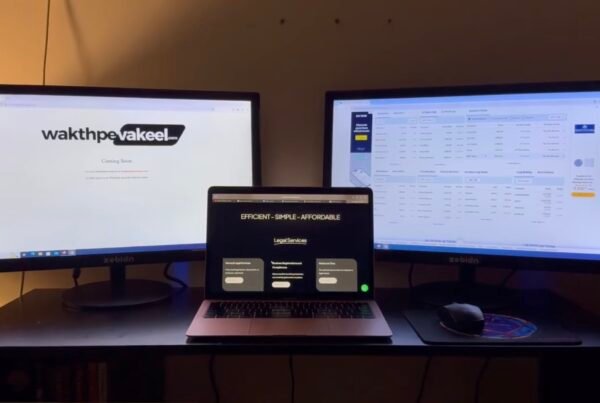What are Bad Loans?
A bad loan is when a loan from lenders like Banks or Private Institutions is clogged up and unpaid for over 90 days. It then comes under the category of nonperforming assets and is therefore dealt with as a Bad Loan. They are the loans sent by the banks to the ARCs, i.e., Asset Reconstruction Companies, to deal with the borrowers and collect the loan amount from them.
What does the RBI Says?
Despite strict regulations of the RBI, India's total bad loan amount doubled the previous year, in 2023, from 15,263 trillion crores to 35,762 trillion crores. As per the RBI Report, Indian banks' gross bad loan ratio may edge up by March 2026 between 5 – 5.3% 1 . At present, the total Bad Loan amount is approximately 55% of the total given by a loan from lenders, which makes it subject to more than half of the economy's money being out of the market and from the hands of lenders. Therefore, to control this, the RBI tautened guidelines for Peer to Peer (P to P)lending in August because they act as takers and lenders, not as an intermediary, in cases of offering liquidity, functioning or investment products. 2 But bad loans are still picking up pace shortly.
How is the Banking Sector dealing with Bad Loans?
The years between 2014 and 2023 have made India’s economy a cesspool, turning the banking sector into a cesspool of bad loans, vested interests, corruption, and mismanagement. The sectors that are measured as the pillar of the economy, i.e. banking sectors/lenders, are in huge debt due to these unpaid loans or bad loans. The sector termed as the backbone of the
economy is in debt these days, i.e., the banking sector due to bad loans, and out of bad loans, Rs. 15,000 crores debts are run up by fugitive businessmen like Vijay Mallya and Nirav Modi. Upcoming ventures in line with bad loans, when traced back, occurred as a problem for the economy ahead; therefore, Mr. Shakti Kant Das, the RBI Chief, has advised the government that extension in the bad loans will create more problems, and it is inevitable for a cleanup.
These words depict that there were a lot of loans that were carried on the book as performing. For future scope, it is important to ensure they do not commit new mistakes that will give rise to unsecured retail loans and subsequently default.
A Way Out: Recovering the Bad Loans
Reserve Bank of India’s guidelines govern the recovery of written-off bank loans, which mandate that banks have a board-approved loan recovery policy. This policy outlines key aspects, including methods of recovery, period-specific targets for reducing non-performing assets (NPAs), and strategies tailored to individual cases. Several recovery mechanisms are available to banks, including:
1. Filing suits: In civil courts or Debts Recovery Tribunals (DRTs) to recover outstanding dues.
2. SARFAESI Act, 2002: Taking action under the Securitisation and Reconstruction of Financial Assets and Enforcement of Security Interest Act to seize and sell secured assets.
3. Insolvency and Bankruptcy Code (IBC), 2016: Initiating cases in the National Company Law Tribunal (NCLT) for insolvency proceedings against defaulting entities.
4. Negotiated settlements/compromises: Engaging in direct negotiations with borrowers to arrive at mutually agreeable settlements.
5. Sale of NPAs: Selling non-performing assets to asset reconstruction companies or other investors.
Banks assess the merits of each case to determine the most effective recovery method, balancing factors such as the borrower's financial situation, legal viability, and potential timeframes for resolution. This approach ensures a strategic and case-specific recovery process aligned with regulatory requirements.
Need for Regulation of NPAs or Bad Loans
There is a requirement for a balanced approach to safeguarding the stakeholders without stifling the industry's potential for bridging India's vast credit gap. The efforts of the RBI to enforce discipline and transparency for better collaboration between the regulators and industry participants are evitable. Platforms like NBFCs (Non-Banking Financial Institutions) provide a place for an online market where lenders and borrowers are the participants, and individuals can view details about the borrowers before lending, such as checking their CIBIL Score before lending money. The rising defaults carry significant economic consequences.
As banks allocate more resources to cover non-performing loans, their profitability may decline, leaving fewer funds available for future lending. This could result in tighter credit availability across critical sectors of the economy, restricting access to financing for both businesses and consumers. Since India’s economic growth relies heavily on domestic consumption, any reduction in lending activity could create a ripple effect, impacting industries reliant on consumer spending.
Additionally, banks may prioritize secured loans over retail lending to minimize risks, potentially limiting small and medium enterprises (SMEs) access to capital. This could, in turn, hamper job creation and slow down economic growth.




